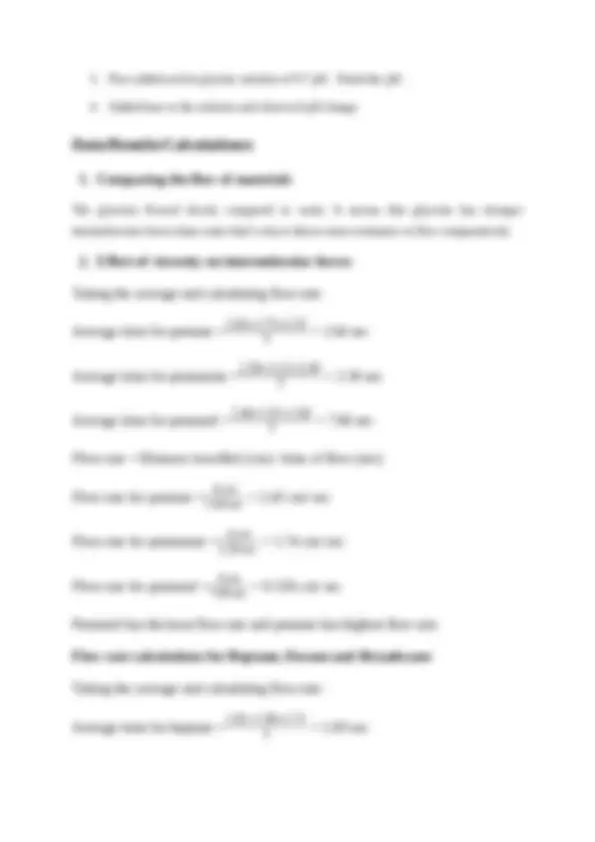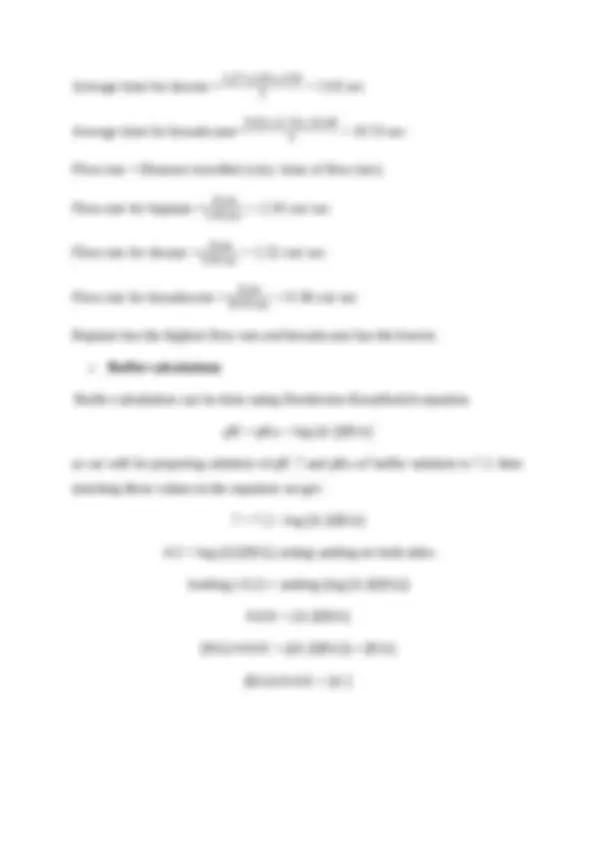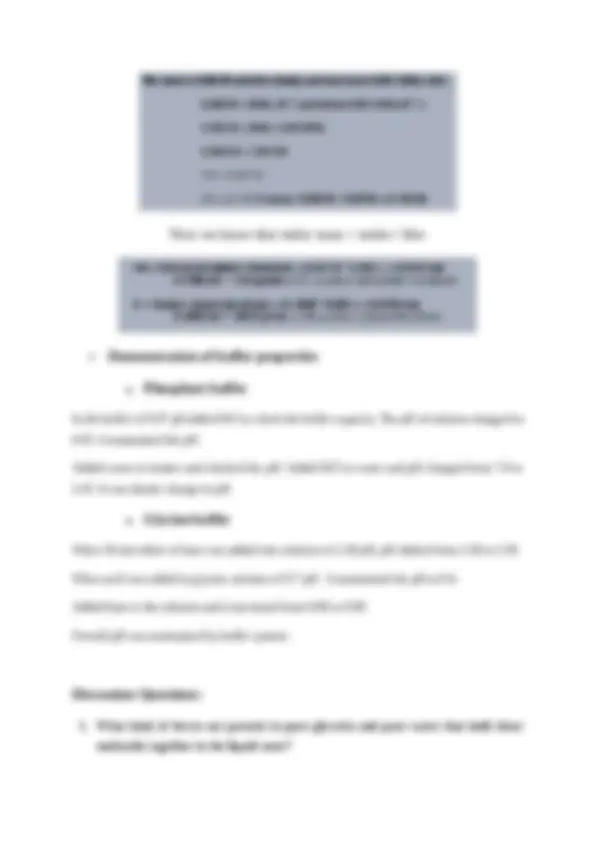





Study with the several resources on Docsity

Earn points by helping other students or get them with a premium plan


Prepare for your exams
Study with the several resources on Docsity

Earn points to download
Earn points by helping other students or get them with a premium plan
Community
Ask the community for help and clear up your study doubts
Discover the best universities in your country according to Docsity users
Free resources
Download our free guides on studying techniques, anxiety management strategies, and thesis advice from Docsity tutors
It is lab report of PORTAGE LEARNING of chem 212 (Biochemistry with lab by Dr. Rodney Austin) TITLE: LAB 2 Organic intermolecular forces and buffer preparation. It includes purpose, procedure, observations, data/results, discussion questions, conclusion, and notes.
Typology: Lab Reports
1 / 7

This page cannot be seen from the preview
Don't miss anything!




Lab 2 Biochemistry
The purpose of the experiment is to investigate the intermolecular forces in organic molecules by comparing their flow and viscosity. We will learn the effect of intermolecular forces on physical properties like viscosity and vapour pressure of organic molecules. In second part we will learn how to make buffer and how to do buffer calculations. We will also learn about properties of buffer systems.
4 cm 1.83 sec
4 cm 3.02 sec
4 cm 10.55 sec
In the buffer of 6.97 pH added HCl to check the buffer capacity. The pH of solution changed to 6.95. It maintained the pH. Added water in beaker and checked the pH. Added HCl in water and pH changed from 7.8 to 2.45. It was drastic change in pH.
When 50 microlitre of base was added into solution of 2.38 pH, pH shifted from 2.38 to 2.39. When acid was added in glycine solution of 9.7 pH. It maintained the pH at 9.6. Added base to the solution and it increased from 9.68 to 9.69. Overall pH was maintained by buffer system.
1. What kind of forces are present in pure glycerin and pure water that hold these molecules together in the liquid state?
In similar way as the molecular weight increases, the surface area increases which increase the London forces present in molecule. That’s why alkanes with high M.W are more viscous than with lower M.W. intermolecular forces also change the vapour pressure of substances. If molecules hold each other strongly they will have less chances to go from liquid phase to gas phase which means their vapour pressure will be lower than molecules with weak intermolecular forces. Buffer systems can be created using the Handerson-Hasselbalch equation. They can withstand a pH change of up to one unit when acids or bases are introduced into systems. Buffers play a crucial role in biological systems because they maintain the pH. Notes: Viscosity is the resistance to flow due to intermolecular forces. The larger the molecule, more surface area and more London dispersion forces. Greater the intermolecular forces, greater the resistance to flow. Vapour pressure is the ability of molecule to escape from the liquid phase to vapour phase. Molecules can only get in gas phase if they overcome the intermolecular forces holding them together. Buffers resist the change in pH of systems.